#Yoga Nidra
Explore tagged Tumblr posts
Text
y'all
relaxation is really the key.
⸻⸻⸻⸻⸻⸻⸻⸻⸻⸻
I saw this post of @pineapplepr1nc3ss888 yesterday and tried Yoga Nidra.
⸻⸻⸻⸻⸻⸻⸻⸻⸻⸻
I did 3 different videos cause I know that like 5-10 Minutes isn't enough for me and in the second and third video I almost got entirely in the void state. (my family members came back home both times that's when I dropped out of it immediately.)
⸻⸻⸻⸻⸻⸻⸻⸻⸻⸻
I couldn't feel my body anymore and I started to float to the ceiling. I will do it again today and just make a playlist in which several Yoga Nidra videos will play by itself - to really make sure I can just stay still.
⸻⸻⸻⸻⸻⸻⸻⸻⸻⸻
byeeee <3
#void#void state#pure consciousness#shifting#reality shifting#yoga nidra#shifting realities#loass#manifesting
436 notes
·
View notes
Text
Ancient void practices
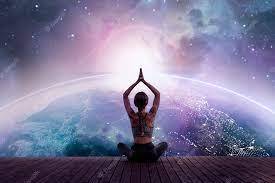
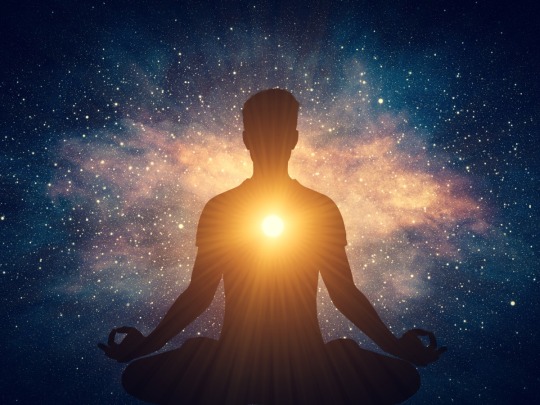
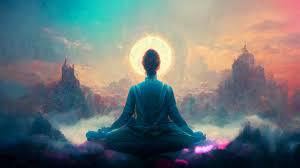
I went through some success stories and tagged the ones that entered the void through yoga nidra and lucid dreaming cos these two ancient practices have always fascinated me since they're deeply centred around our state of consciousness and are also known portals to out of body experiences/shifting/the void. Read them if you need some motivation! Also see my recent post on lucid dreaming if you're interested in entering the void through that.
Anyway, if you have doubts about the void, I think a great anchor is leaning into practices that have roots dating back to ancient times and researching them and of course, reading more widely than just Tumblr. When you do this, you'll know that this state isn't something that was invented by Tumblr and has existed since.. forever because well, it's pure consciousness lol. And the void/turiya/samadhi has been known way before Neville's time. From my research, it's the main goal of yoga practitioners as well but they pursue it for the purpose of enlightenment and peace as opposed to manifesting desires.
The rest of this post is a dump of interesting excerpts from my research on yoga, samadhi and turiya and its links to manifesting, reality shifting and the void state. You can also do your own research although there's no need to overdo it :)
~~~~~~~~~~~~~~~~~~~~~~~~~~~~~~~~~~~~~~~~~~~~~~~~~~~~~~~~~~~~~~~
This extract seems to be talking about reality shifting/manifesting/instant creation. I am curious on where we could learn more about yogis doing this!
Trapped in Your Own World Many yogis have created their own worlds and been trapped in realities like this. I am going into an area which is a twilight zone, but there are many yogis who have created their own world around themselves. A yogi goes into a cave and actually creates his own universe and lives there. This is not a joke. He creates everything that he wants – his own kind of planets, his own kind of earth, his own kind of everything – and lives there very happily. A universe is contained inside the cave. You can create a whole universe in an atom’s space because “here and there” and “this much and that much” are a creation of the mind. There are many yogis like this, but they are no closer to realization than you. He lives in a different world, that is all. He is probably more caught up than you, because he is also the creator. He has learned the art of creation. This does not become an ultimate release. This just becomes a different kind of action, a different way of doing things. An artist draws a new world on a canvas. A yogi actually creates it. The artist’s creation is two-dimensional, whereas the yogi’s is three-dimensional. This is more deceptive. An artist can get so involved in the world he is creating that he starts believing it is true, and it is true for him. A poet believes that whatever he writes is the truth. Similarly, a painter deeply involved in what he is doing believes what he is painting is the truth. When two-dimensional things are like this, if you create three-dimensional things around yourself, you are definitely going to be more caught up with them. Source
To be honest, I have no idea what the difference is between samadhi and turiya in yoga terms. I tried looking into it but it's still not clear to me. If you research into both terms, they come up with very similar definitions.
Yoga nidra and the void (turiya)
By means of Yoga Nidra, skilled practitioners seek to access Turiya, not just when in meditation or absorbed samadhi states, but in all variations of consciousness- encompassing waking, dreaming and deep sleep. They seek lucidity in all states. Yoga Nidra is a powerful practice that guides us beyond mind and in fact turns mind upon itself where its obscuring nature is dissolved to reveal the inner Light that is perennially Bright, with eyes closed or open. Source
What is turiya?
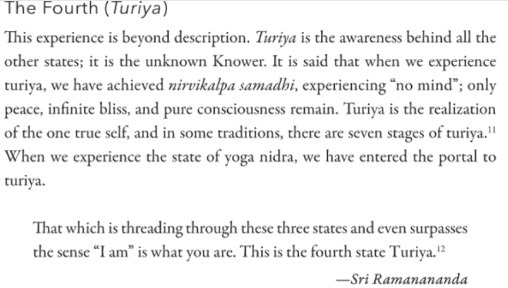
Source: Radiant Rest: Yoga Nidra for Deep Relaxation and Awakened Clarity by Tracee Stanley
Turiya is not a state apart from the grosser states but pervades all levels of reality as superconsciousness. Ramana Maharshi interprets turiya as the natural state that permeates the other states, the only whole reality. The Mandukya Upanishad discusses turiya as pure consciousness, which is indescribable, incomprehensible, and unthinkable by the mind, but ultimately realized as the one true self. Source
The four states of consciousness are jagrat, svapna, shushupti and turiya. Jagrat is waking consciousness, svapna is the dream consciousness, shushupti is the deep sleep consciousness and turiya is higher consciousness which is beyond all previous states. Entering the state of turiya requires inner silence. It can be achieved when the mind is free of mental blocks and bondages with time and space. The goal of yoga and meditation is to achieve turiya, where oneness is felt with the universe. Source
There are three states only, the waking, dream and sleep. Turiya is not a fourth one; it is what underlies these three. But people do not readily understand it. Therefore it is said that this is the fourth state and the only Reality. In fact it is not apart from anything, for it forms the substratum of all happenings; it is the only Truth; it is your very Being. The three states appear as fleeting phenomena on it and then sink into it alone. Therefore they are unreal. Source
410 notes
·
View notes
Note
https://www.tumblr.com/charmedreincarnation/729553213200695296/earlier-today-you-reblogged-something-from
Im also with this person did the guided meditation yesterday but I was slipping in and out of the void while also falling asleep but I affirmed after some few minuets I was in and out of the void also but I didn’t persist but I was extremely fucking happy, then I tried today but I’m sibling pissed me the fuck off (sorry T_T) and I had to stop but for me I have to do it in a extremely quiet environment since I have no headphones and just put the volume kind of loud by my head/ears and listen, and honestly the stuff moon did I did it last year and it helped but I was persistent apparently but I’m not giving up no matter how uncomfortable I feel.
Yoga nidra for the W then. Super happy for you and I hope to will get your success story soon 💕💕
92 notes
·
View notes
Text
10th February 2025
did yoga nidra before bed but fell asleep/blacked out for a bit while doing it but i dont remember falling asleep (??). Anyway, we try again tonight. I also did lullaby after yoga nidra then woke up in 6 hours affirmed for the void again and fell asleep. I do feel more confident about entering the void through yoga nidra.
Here is a beautiful piece written by yogi Sri Aurobindo, who described the void in The Life Divine (1940).
"A silence, an entry into a wide or even immense or infinite emptiness is part of the inner spiritual experience…this silence is the silence of the spirit which is the condition of a greater knowledge, power and bliss, and this emptiness is the emptying of the cup of our natural being, a liberation of it from its turbid contents so that it may be filled with the wine of God; it is the passage not into non-existence but to a greater existence.
We can enter this state through Yoga Nidra with practice, for some it comes quickly, others it might take a little more time, but the journey to get there is sublime and healing in itself."
6 notes
·
View notes
Text
instagram
2 notes
·
View notes
Text
I don't know if it's my body getting used to waking up at 4am and then going back to sleep or what but I've been finding that anytime I wake up in the night I'm just not tired which annoys me because I'm unable to just naturally slip into sleep paralysis, instead I have to attempt to do the whole WILD technique. I woke up at 6 this morning and decided to try WILD with yoga nidra to relax my body and it didn't exactly work, I was just too awake but I had a few moments of lucid dreaming I guess although I only would've been asleep for like 2 seconds at most. At one point I briefly found that I was standing on the ground and sort of chastised myself for getting up before I realised I hadn't actually moved which immediately brought me out of that, and then later, I thought I had reached for my drink bottle when I hadn't. I eventually gave up after about an hour of just laying completely still, but even though it didn't work this time, I'm definitely going to keep trying in the mornings or any point I wake up.
4 notes
·
View notes
Text
youtube
Benefits of Yoga Nidra — give it a try!
“Yoga Nidra (YN), also known as yogic sleep/psychic sleep, is a relaxation technique. The name “Yoga Nidra” derives from two Sanskrit words. “Yoga” which means union and “Nidra” which means sleep. This Yoga Nidra is a state of consciousness, guided by meditation. But Yoga Nidra and meditation are two different practices. The goal of Yoga Nidra is to move into a deep state of conscious awareness sleep. In modern aspect this works with autonomic nervous system.”
The first link I’ve attached is a study that focused on analyzing the effects of Yoga Nidra among participants.
General Objective: To evaluate the clinical effects of Yoga Google and Google Scholar to find out the therapeutic effects of Yoga Nidra within the period of 06 months was the methodology.
Specific Objectives: To identify the therapeutic effects of Yoga Nidra for psychological diseases, psychosomatic disorders and physical diseases.
Justification: Benefits of practicing Yoga Nidra are improving memory power and reducing stress according to the common opinion by Yoga Acharyas at present. The therapeutic effects of Yoga Nidra must be identified by the physicians who are practicing yoga therapeutics.
The study showed that Yoga Nidra is beneficial in reducing mental diseases such as stress, anxiety, insomnia and post-traumatic stress syndrome,psychosomatic disorders and physical diseases such as hormonal imbalance, pain in diseases,migraine and noncommunicable diseases; Diabetes mellitus, Hypertension and Cardiovascular diseases. Yoga Nidra has therapeutic effects, practice of it improves physical, mental and social well-being and it can be used as a preventive, promotive and curative technique were the conclusions of this study. Yoga Nidra has therapeutic effects, practice of it improves physical, mental and social well-being and it can be used as a preventive, promotive and curative technique were the conclusions of this study.
6 notes
·
View notes
Text
c. 2002
5 notes
·
View notes
Text
ART OF YOGA NIDRA: DEEP RELAXATION AND MEDITATION TECHNIQUES
You know in the current times that we live in, we generally believe in working fast, easting fast, being competitive, knowing what’s going on around in the world with a few clicks and in a few seconds and most of all we have come down to making a small world of stress, anxiety and scrolling through the phone without worrying about our sleep. And in most of the cases now people just can’t sleep…

View On WordPress
#art of yoga nidra#benefits of yoga nidra#importance of yoga#meditation#mental health#mindfulness#recommendations#self development#self help#yoga#yoga nidra#yoga series#yogic-sleep
2 notes
·
View notes
Text
youtube
4 notes
·
View notes
Text
Yoga Nidra for void
In my previous post, I covered information gathered from research on yoga nidra and its links to turiya (the void). I want to highlight some parts of that research.
By means of Yoga Nidra, skilled practitioners seek to access Turiya. Yoga Nidra is a powerful practice that guides us beyond mind and in fact turns mind upon itself where its obscuring nature is dissolved to reveal the inner Light that is perennially Bright, with eyes closed or open. When we experience the state of yoga nidra, we have entered the portal to turiya. Entering the state of turiya requires inner silence. It can be achieved when the mind is free of mental blocks and bondages with time and space. The goal of yoga and meditation is to achieve turiya, where oneness is felt with the universe.
So basically yoga nidra (if done correctly), can bring you to a state right before the void which explains why there are so many success stories that used yoga nidra. I did a quick analysis on these and these are the ones that were used (there were also some other yoga nidra successes where they didn't reference any particular meditation):
Jason Stephenson's 61 points yoga nidra: 10 successes
Lizzy Hill's yoga nidra: 6 successes
RosalieYoga's yoga nidra for astral projection: 2 successes
Ally Boothroyd's yoga nidra for sleep: 1 success
Don't let the length of the audio put you off, the meditation for most of these is about 15 minutes with the rest being gentle soft music to extend the yoga nidra state (although the Ally one I think has talking for the entire 2 hours so I don't really recommend using that one but it might be good to keep you from falling asleep)
220 notes
·
View notes
Text
30-Day Guest Pass
#waking up#meditation#Mindfulness#zen#dzogchen#buddhism#advaita vedanta#spirituality#Mahamudra#yoga nidra
0 notes
Text
Chiara ASMR consiglia il Centro Yoganostress: il luogo perfetto per relax e benessere a Roma
Il luogo perfetto per relax e benessere a Roma: Chiara ASMR consiglia il Centro Yoganostress Se c’è un luogo che incarna perfettamente l’armonia tra mente e corpo, quello è il Centro Yoganostress a Roma. Dopo aver vissuto un’esperienza incredibile durante i miei eventi di ASMR dal vivo, posso dire con certezza che questo spazio è una vera oasi di benessere nel cuore di Monteverde. Un luogo…
#ASMR Roma#bagni sonori#Benessere olistico#campane tibetane#centro benessere Roma#Chiara ASMR#equilibrio interiore#hatha yoga roma#meditazione guidata#meditazione sonora#mindfulness roma#Monteverde yoga#reiki roma#relax profondo#riduzione dello stress#rilassamento mentale#tecniche di rilassamento#yoga a roma#yoga nidra#yoganostress
1 note
·
View note
Text
I would like to extend my heartfelt gratitude to my dear friend and esteemed Yoga Nidra teacher, Patricia McPherson, for inviting me to be a guest speaker at her Yoga Nidra Virtual Training on June 27th. It was a wonderful experience engaging with her dedicated students.
https://boldjourney.com/meet-patricia-mcpherson/

#consciousness#enlightenment#spirituality#nonduality#interconnectedness#spiritualawakening#spiritualenlightenment#philosophy#meditation#mindfulness#yoga instructor#yoga#yoga nidra
2 notes
·
View notes
Text
Yoga Nidra; What is it?

Yoga Nidra is lying down meditation. It is a healing relaxation practice which encourages homeostasis in body and equanimity in mind. But it feels like sleeping. If you are exhausted or sick or overworked or sad or broken, or compulsively eating or your body is sore after a workout, it will help. Hypervigilance anger anxiety damage and bad habits – holding tight to events and a flawed worldview robs us of our naturalness. We can no longer trust, allow or be vulnerable. We put on masks. Yoga Nidra is super effective rest. Twenty minutes of Yoga Nidra gives you 4 hours of wellbeing and producitveness. Read more: https://www.humstudio.com.au/hum-blog/yoga-nidra-what-is-it
#best meditation courses sydney#yoga classes sydney#meditation and yoga for beginners#meditation course sydney#yoga for beginners sydney#Yoga Nidra
1 note
·
View note
Text
Unlocking the Mind: Dr. Elana's Journey into Yoga Nidra and Neuroplasticity
by UEVS and the power of AI

The air in Mysore was thick with the scent of incense and the fading heat of the midday sun. Dr. Elana sat cross-legged on the polished wooden floor of the shala, sweat still cooling on her skin after the intense Mysore-style Ashtanga practice. Around her, the soft murmurs of departing students blended with the distant sounds of temple bells and street vendors outside. She had been told to wait, and now, as the shala grew quieter, a figure approached.
He was an older man, his frame lean and powerful, his presence at once grounded and ethereal. His eyes held the stillness of deep waters. “You are searching for more than asana,” he said, lowering himself into a seated posture with effortless grace. “You seek what lies beneath.”
Elana nodded, intrigued. This was the Yoga Nidra expert she had heard about—an Ashtanga practitioner who had spent decades exploring the deeper states of consciousness that lay beyond the physical practice.
“What do you know of Yoga Nidra?” he asked, his voice steady and calm.
Elana hesitated, choosing her words carefully. “I’ve studied its applications in neuroscience—how it enhances neuroplasticity, helps recovery, and cultivates awareness. I’ve read about its impact on brainwaves, how it shifts the mind from beta waves associated with active thinking to alpha and theta waves, which promote relaxation, creativity, and deep learning. I’ve experienced its effects in deep relaxation, but…” she exhaled, “I feel there’s more to it than what modern science describes.”
A faint smile touched his lips. “Indeed. Yoga Nidra is a systematic method of relaxation, but it is also a practice that enhances cognitive function and emotional resilience. Studies show that it can reduce cortisol levels, improve sleep quality, and even support neuroplasticity—the brain’s ability to adapt and reorganize itself. The ancients understood its power long before we had the tools to measure it.”
He gestured for her to lie down in Shavasana, the traditional posture for Yoga Nidra. “You have worked your body. Now, let us work with the mind.”
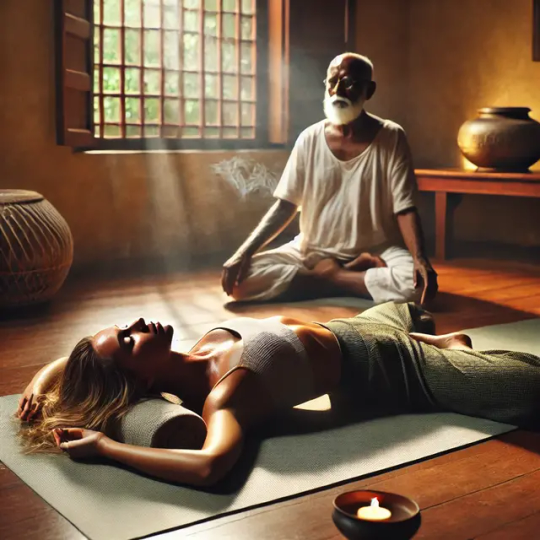
Elana stretched out on the mat, closing her eyes as he guided her through the familiar stages—awareness of breath, body scanning, visualization. As his voice led her through the process, she felt a deep sense of stillness. It was not just relaxation—it was a recalibration of her nervous system. She could sense her thoughts slowing, her body sinking into a state of profound rest, yet her mind remained alert.
When she finally opened her eyes, she felt refreshed, her breath deeper. The expert studied her with knowing eyes. “You understand now,” he said simply.
Elana sat up slowly, words failing her. She had come seeking history, but what she had found was a direct experience of how Yoga Nidra could alter the brain’s state and enhance mental clarity.
He nodded. “Then teach not just the postures, but the path. Bring them here, into this space where thought quiets, and the brain regenerates.”
As Elana stepped out of the shala into the golden light of Mysore’s streets, she stopped at a street vendor and purchased a fresh coconut. She cracked it open and took a deep sip, feeling the natural electrolytes replenish her body. The vendor smiled. “Best thing after practice,” he said.
Elana nodded, knowing he was right. Coconut water was rich in potassium and magnesium, essential for muscle recovery and hydration. Unlike artificial sports drinks, it was a natural isotonic beverage that helped restore electrolyte balance without unnecessary sugars.
While enjoying her coconut Elana said: “I need to integrate Yoga Nidra,” she murmured. “Not just for myself, but into the curriculum of the University of Earth Vital Signs (UEVS)." She also realized that it could be particularly useful for stressed time travelers needing a quick yet effective power nap to restore mental clarity🌀. She envisioned it as a key practice for students to develop mental resilience, enhance learning capabilities, and balance their high-level scientific studies with deep relaxation techniques.
A Brief History of Yoga Nidra
Yoga Nidra has roots in ancient yogic traditions, particularly in the teachings of the Upanishads and tantric texts. The practice was formalized in the modern era by Swami Satyananda Saraswati, who adapted it into a structured technique combining guided meditation, body scanning, and deep relaxation. Traditionally used by yogis to enter states of deep consciousness and insight, Yoga Nidra has since been validated by scientific studies for its benefits in reducing stress, enhancing learning, and improving overall well-being.
Fun Quiz: Test Your Yoga Nidra Knowledge!
What is the traditional posture used for Yoga Nidra? a) Padmasana (Lotus Pose) b) Shavasana (Corpse Pose) c) Adho Mukha Svanasana (Downward-Facing Dog) d) Tadasana (Mountain Pose)
Which brainwave states are associated with Yoga Nidra? a) Beta and Gamma b) Delta and Theta c) Alpha and Theta d) Delta and Beta
What is one scientifically recognized benefit of Yoga Nidra? a) It increases cortisol levels b) It reduces stress and enhances neuroplasticity c) It makes you immune to sleep deprivation d) It only works for advanced yogis
Who is credited with modernizing and systematizing Yoga Nidra? a) B.K.S. Iyengar b) Swami Satyananda Saraswati c) Pattabhi Jois d) Paramahansa Yogananda
Why did Dr. Elana decide to integrate Yoga Nidra into the UEVS curriculum? a) To help students develop mental resilience b) To make them fall asleep in class c) To train them to be professional nap-takers d) Because she wanted an excuse to relax more often
Quiz Answers:
b) Shavasana (Corpse Pose)
c) Alpha and Theta
b) It reduces stress and enhances neuroplasticity
b) Swami Satyananda Saraswati
a) To help students develop mental resilience
Disclaimer
This article is for informational purposes only. While Yoga Nidra has been shown to have numerous benefits, it is not a substitute for medical treatment or professional psychological therapy. Always consult a qualified health professional before beginning a new wellness practice—unless, of course, you are a time-traveling scientist like Dr. Elana, in which case, carry on! 🌀
References
Saraswati, S. (2009). Yoga Nidra: A meditative practice for deep relaxation and healing. Yoga Publications Trust.
Tang, Y.-Y., Hölzel, B. K., & Posner, M. I. (2015). The neuroscience of mindfulness meditation. Nature Reviews Neuroscience, 16(4), 213–225.
Parker, S., Bharati, S. V., & Fernhall, B. (2013). The effects of yoga nidra on sleep. International Journal of Yoga Therapy, 23(1), 15-22.
Payne, P., Levine, P. A., & Crane-Godreau, M. A. (2015). Somatic experiencing: Using interoception and proprioception as core elements of trauma therapy. Frontiers in Psychology, 6, 93.
Wang, S., & Wang, S. (2020). The effects of yoga nidra on stress reduction and mental clarity: A meta-analysis. Journal of Mind-Body Studies, 28(2), 102-118.
0 notes